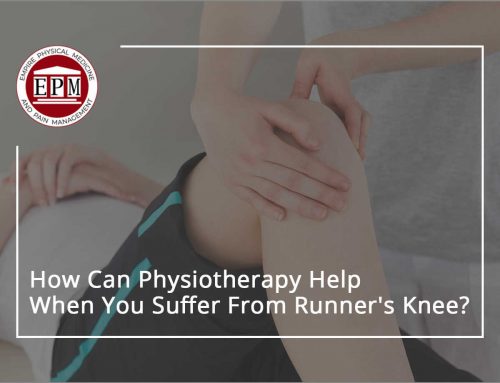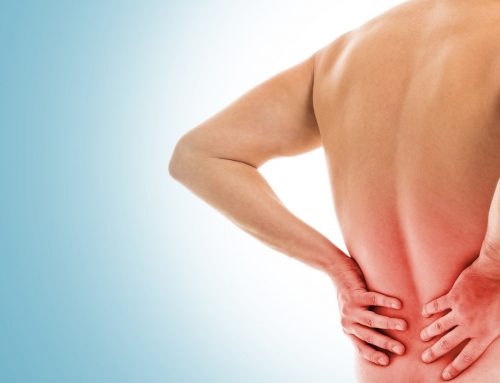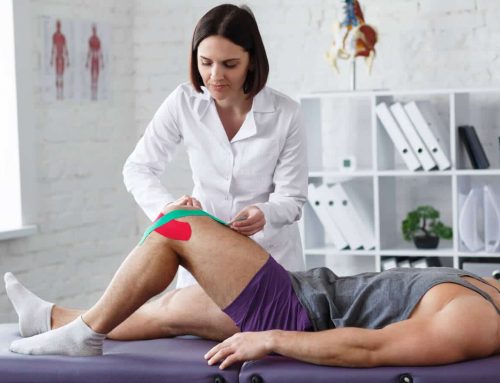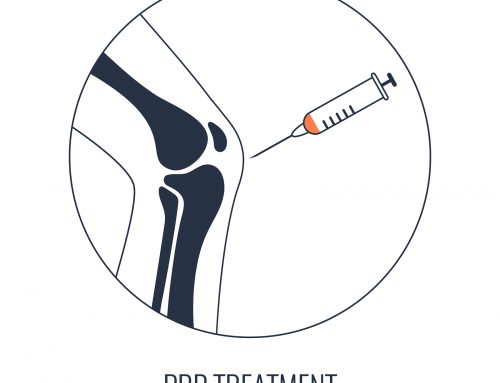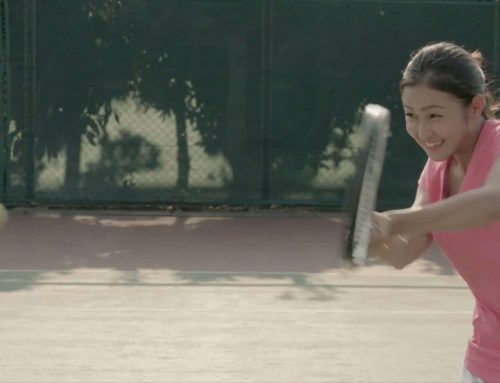One minute you’re texting on your phone and the next you have a shooting pain radiating down your arm. You may find that grasping an object has become difficult and simple tasks such as eating or drinking can cause a sharp ache in your forearm. If any of this sounds familiar, you may have tennis elbow. Tennis elbow can affect anyone, despite its name. In fact, less than 5% of those afflicted with tennis elbow have the condition from playing tennis.
Tennis elbow, also known as lateral epicondylitis, is a painful condition which occurs when the tendons in your elbow are overworked by repetitive motions of your arm and wrist. It typically affects the arm with your dominant hand. When your forearm muscles and tendons become damaged from repeating the same motions over and over again, they become inflamed. Tennis elbow occurs when there is damage to the extensor carpi radialis brevis muscle (ECRB).
This muscle keeps your wrist stable when your elbow is straight. When this muscle gets strained or weakened from overuse, microscopic tears form in the tendon where it is attached to the lateral epicondyle located on the outside of your elbow. These inflamed forearm muscles are attached to your elbow, hence the name, and lead to inflammation and pain.
Who Is at Risk and How Does One Develop it?
Anyone can be at risk, especially if you are involved with activities or an occupation with heavy forearm arm use (including swinging or lifting). If you work as a mechanic, painter, carpenter or chef, you may be at an increased risk due to the repetitive nature of your job. You could also develop the condition from extensive computer use, as the repetitive clicking and typing can cause strain on your forearm muscles. If you are unable to avoid making the same hand and wrist motions over and over, wear a brace even if you are at work (as long as it doesn’t affect your duties) and be conscious of taking brakes.
Signs and Symptoms
Symptoms may develop over time and can become worse if left untreated. You may wake up with a persistent ache or stiffness in your forearm. You may feel also feel soreness of your forearm muscles throughout the day, even while your arm is at rest. While this may feel similar to the symptoms you’d experience with carpal tunnel, the pain is originating in the area where the tendons of your forearm muscles attach to the outside of your elbow. You may also have poor grip strength.
How is it Diagnosed?
Since tennis elbow is the result of several tears in the tendons, it will not show up on an x-ray. Your doctor will have you perform a number of exercises instead and have you flex your elbow, arm, wrist for a variety of movements to identify where the pain is. An electromyogram (EMR) or magnetic resonance imaging (MRI) may be requested as well.
Treatment Options
Tennis elbow usually doesn’t require surgery and can typically be treated with conservative measures. There are a number of things you can do to help ease the pain:
Be Mindful
Avoid straightening your arm all the way or bending your wrist. Ensure that you warm up or stretch your muscles if you’re participating in any activities where there is heavy use of the arm.
Use an Ice Pack
You can also ice it to help reduce inflammation and swelling. Use an ice pack in fifteen-minute intervals, several times throughout the day on the area where you’re experiencing discomfort.
Rest
Since tennis elbow is a result of overstrained and overuses muscles, resting them will help. Try to avoid activities that may cause pain in the affected arm, elbow and wrist and eliminate any repetitive motions or heavy lighting with that arm.
Splints/Brace
Depending on how severe your condition is, a brace may be recommended. Wearing one enable your tendons and muscles to rest and will allow the tears to heal properly. You may be advised to wear one for up to six weeks.
Ibuprofen
Taking an ibuprofen will help with the inflammation associated with tennis elbow. Over-the- counter pain relievers such as advil or motrin can also ease the pain.
Physical therapy can be very effective in treating tennis elbow by strengthening your forearm muscles and increasing their flexibility. Physical therapists can work with you on a variety of strengthening exercises, such as the below:
Wrist Flex or Stretch
Extend your right arm in front of you so that your palm is facing you. With your left hand, place pressure on your right hand gently so that the back of your hand is flexing towards your body. You should feel a mild stretch in your forearms. Hold this stretch for ten seconds. Repeat but flip your hand so that your palm is facing down. Use your other hand to place light pressure and bend your hand in with your palm facing your body. This is an easy exercise that you can do at your desk or while watching TV. As you start to do this stretch more, you can build up the hold time to thirty seconds.
Dumbbell Lifts
Start seated. While holding a two-pound dumbbell with your hand on the affected side, rest your elbow on your knee so that your forearm hangs off. Slowly lift the weight while turning your palm so that it faces up. Rotate back so that your palm faces downwards. Repeat 10 times.
Ball Squeeze
This is a good exercise for strengthening the muscles in your forearms. Rest your forearm on a table. Hold a squishy ball and squeeze for ten seconds. Repeat this ten times and do this a few times a day.
Finger Stretch
Touch your pointer finger to your thumb like you are giving someone the “A-ok” sign. Put a rubber band around these two fingers and slowly open them all the way so that the rubber band stretches. Close your fingers and repeat this twenty times. If this is too easy then you can add another rubber band to increase the tension.
Published By:
Empire Physical Medicine & Pain Management
7 W 45th St floor 9,
New York, NY 10036
Phone: (646) 665-7109
Website: https://manhattanpainrelief.com


